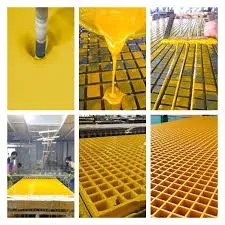
-
 Afrikaans
Afrikaans -
 Albanian
Albanian -
 Amharic
Amharic -
 Arabic
Arabic -
 Armenian
Armenian -
 Azerbaijani
Azerbaijani -
 Basque
Basque -
 Belarusian
Belarusian -
 Bengali
Bengali -
 Bosnian
Bosnian -
 Bulgarian
Bulgarian -
 Catalan
Catalan -
 Cebuano
Cebuano -
 China
China -
 China (Taiwan)
China (Taiwan) -
 Corsican
Corsican -
 Croatian
Croatian -
 Czech
Czech -
 Danish
Danish -
 Dutch
Dutch -
 English
English -
 Esperanto
Esperanto -
 Estonian
Estonian -
 Finnish
Finnish -
 French
French -
 Frisian
Frisian -
 Galician
Galician -
 Georgian
Georgian -
 German
German -
 Greek
Greek -
 Gujarati
Gujarati -
 Haitian Creole
Haitian Creole -
 hausa
hausa -
 hawaiian
hawaiian -
 Hebrew
Hebrew -
 Hindi
Hindi -
 Miao
Miao -
 Hungarian
Hungarian -
 Icelandic
Icelandic -
 igbo
igbo -
 Indonesian
Indonesian -
 irish
irish -
 Italian
Italian -
 Japanese
Japanese -
 Javanese
Javanese -
 Kannada
Kannada -
 kazakh
kazakh -
 Khmer
Khmer -
 Rwandese
Rwandese -
 Korean
Korean -
 Kurdish
Kurdish -
 Kyrgyz
Kyrgyz -
 Lao
Lao -
 Latin
Latin -
 Latvian
Latvian -
 Lithuanian
Lithuanian -
 Luxembourgish
Luxembourgish -
 Macedonian
Macedonian -
 Malgashi
Malgashi -
 Malay
Malay -
 Malayalam
Malayalam -
 Maltese
Maltese -
 Maori
Maori -
 Marathi
Marathi -
 Mongolian
Mongolian -
 Myanmar
Myanmar -
 Nepali
Nepali -
 Norwegian
Norwegian -
 Norwegian
Norwegian -
 Occitan
Occitan -
 Pashto
Pashto -
 Persian
Persian -
 Polish
Polish -
 Portuguese
Portuguese -
 Punjabi
Punjabi -
 Romanian
Romanian -
 Russian
Russian -
 Samoan
Samoan -
 Scottish Gaelic
Scottish Gaelic -
 Serbian
Serbian -
 Sesotho
Sesotho -
 Shona
Shona -
 Sindhi
Sindhi -
 Sinhala
Sinhala -
 Slovak
Slovak -
 Slovenian
Slovenian -
 Somali
Somali -
 Spanish
Spanish -
 Sundanese
Sundanese -
 Swahili
Swahili -
 Swedish
Swedish -
 Tagalog
Tagalog -
 Tajik
Tajik -
 Tamil
Tamil -
 Tatar
Tatar -
 Telugu
Telugu -
 Thai
Thai -
 Turkish
Turkish -
 Turkmen
Turkmen -
 Ukrainian
Ukrainian -
 Urdu
Urdu -
 Uighur
Uighur -
 Uzbek
Uzbek -
 Vietnamese
Vietnamese -
 Welsh
Welsh -
 Bantu
Bantu -
 Yiddish
Yiddish -
 Yoruba
Yoruba -
 Zulu
Zulu
mandrel
The Essential Role of Mandrels in Manufacturing and Engineering
Mandrels are vital tools in various manufacturing processes, serving as precision supports and fixtures that help shape materials—usually metal or plastic—into desired forms. These cylindrical devices are used in a wide array of applications, ranging from the automotive to the aerospace industry. Understanding the significance and functionality of mandrels can shed light on their critical role in ensuring efficiency, accuracy, and quality in production.
At its core, a mandrel acts as a core around which material is manipulated. In processes such as bending or forming, a mandrel provides the necessary support to maintain the desired shape without distortion. For instance, when fabricating exhaust pipes in automotive engineering, a mandrel is inserted into the pipe to prevent it from collapsing as it is bent to fit into intricate designs. This not only maintains the structural integrity of the component but also enhances the aesthetic appeal of the finished product.
The manufacturing landscape has evolved substantially due to advancements in technology. Traditionally, mandrels were crafted from solid metals, which offered strength but could be cumbersome. With the introduction of materials like aluminum and composites, modern mandrels are now lighter, more versatile, and equally robust. Moreover, the use of computer-aided design (CAD) allows engineers to create mandrels tailored to specific applications, ensuring that they meet precise specifications for various manufacturing processes.
mandrel

In addition to bending and forming, mandrels play a crucial role in processes such as machining and assembly. For instance, in machining, a mandrel can be used to hold a workpiece firmly in place. This is particularly important for parts that require drilling or cutting, as it minimizes movement and ensures accuracy. Similarly, during assembly processes, mandrels can help in aligning components correctly, which is vital for the overall functionality and safety of products, especially in complicated machinery.
The versatility of mandrels extends beyond just shaping and support. In the field of 3D printing and additive manufacturing, mandrels can serve as temporary cores for hollow components. Once the printing process is completed, these mandrels can be removed, leaving behind lightweight structures that conserve material and reduce weight—an essential attribute for many industries, especially aerospace.
Maintenance of mandrels is also an important aspect of their usage. Regular inspection for wear and tear is necessary to keep them functioning effectively. A damaged mandrel can significantly affect the final product's quality, leading to increased costs and project delays. Thus, manufacturers invest in training personnel to ensure proper handling and care of these crucial tools.
In conclusion, mandrels are indispensable in modern manufacturing and engineering, enabling the production of complex components with precision and efficiency. As technology continues to advance, the design and utility of mandrels will likely evolve, further enhancing their role in different industries. Understanding and utilizing mandrels correctly not only optimizes production processes but also helps in maintaining high standards of quality in an increasingly competitive market.
Latest news
-
Exploring the Benefits of Top Hammer Drifter Rods for Enhanced Drilling PerformanceNewsJun.10,2025
-
High-Precision Fiberglass Winding Machine for GRP/FRP Pipe Production – Reliable & Efficient SolutionsNewsJun.10,2025
-
FRP Pipes & Fittings for Shipbuilding - Corrosion-Resistant & LightweightNewsJun.09,2025
-
Premium FRP Flooring Solutions Durable & Slip-ResistantNewsJun.09,2025
-
Premium Fiberglass Rectangular Tanks Durable & Lightweight SolutionNewsJun.09,2025
-
Tapered Drill String Design Guide Durable Performance & UsesNewsJun.09,2025









